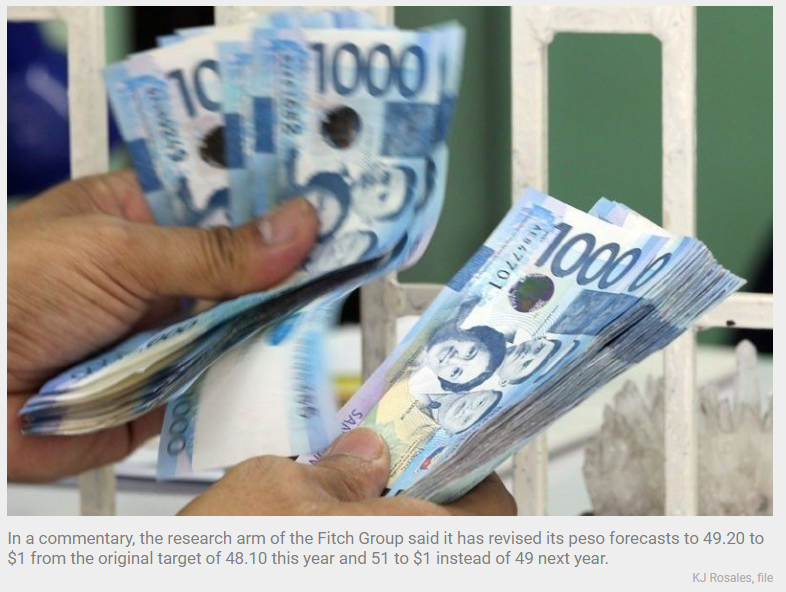Philippines: Peso may weaken to P51 to $1 next year
MANILA, Philippines — Fitch Solutions Country Risk & Industry Research expects the peso to weaken further to 51 to $1 next year as the Philippines continues to struggle to contain the pandemic.
In a commentary, the research arm of the Fitch Group said it has revised its peso forecasts to 49.20 to $1 from the original target of 48.10 this year and 51 to $1 instead of 49 next year.
“We expect the peso to remain vulnerable to COVID outbreaks, given low vaccination rates and difficulties containing outbreaks,” Fitch Solutions said.
As of Sept. 15, the Philippines has fully vaccinated only 16.3 percent of its population.
The Philippines is experiencing its worst outbreak in September, with a daily average of 21,287 new cases and 153 new deaths. There are almost 2.4 million confirmed COVID cases with more than 37,000 deaths in the Philippines despite imposing the longest and strictest lockdowns in the world.
“The outbreaks are disrupting the economy’s recovery and hampering market investors’ interest in its assets and delaying longer-term foreign investment decisions. There is also a heightened prospect that the Philippines’ ability to revive its tourism sector will lag other markets, which again will soften demand for the peso relatively,” it said.
Fitch Solutions expects the local currency to trade in a wide range of 49 to 52 to $1 over the near term given continued uncertainty about the government’s handling of the pandemic.
“We at Fitch Solutions expect the Philippine peso to weaken within a wide range over the near term as uncertainty around the pandemic and policy response weigh on investor confidence,” it said.
According to Fitch Solutions, the peso has depreciated by 3.1 percent against the greenback since its last update last June 17, bringing the year-to-date return to 3.8 percent.
It said Asian currencies have remained under pressure in the third quarter due to the region’s slow pace of vaccinations, Delta variant outbreaks and renewed restrictions, signs of slower growth in China, as well as the limited hawkish guidance by central banks.
In contrast, Fitch Solutions said central banks have turned hawkish in other regions and the US Federal Reserve has signaled a likely tapering of its bond purchases over the coming quarters.
Fitch Solutions pointed out the continued economic uncertainty caused by the pandemic has prompted the Bangko Sentral ng Pilipinas to maintain its loose monetary policy conditions through 2021 and the first half of 2022.
It expects inflation to average four percent this year with upside risks given that global inflationary pressures have yet to peak. It expects the Monetary Board to hike rates by 50 basis points next year.
It also sees the current account surplus narrowing to 1.3 percent of gross domestic product this year from 3.6 percent of GDP last year.
“In addition, we note the prolonged disruptions from the pandemic have weakened the Philippines’ fundamentals, with, for instance, public debt rising and the current account surplus shrinking. This is likely to also weigh on the peso’s attractiveness to investors,” Fitch Solutions said.
Source: https://www.philstar.com/business/2021/09/22/2128722/peso-may-weaken-p51-1-next-year


 English
English




